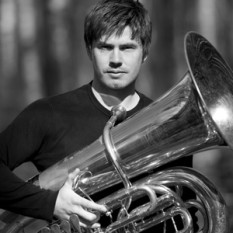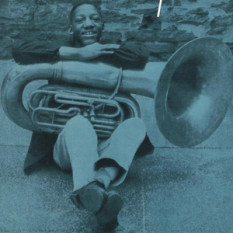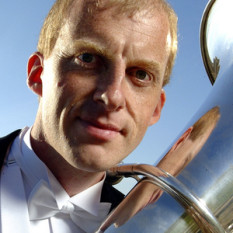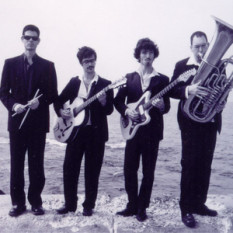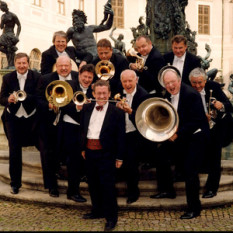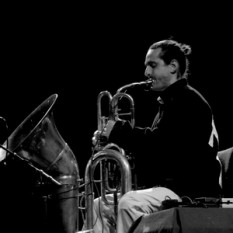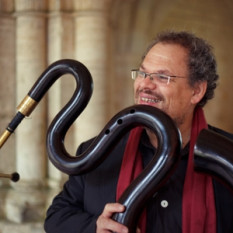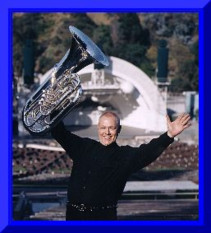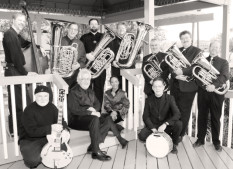The tuba is the largest and lowest-pitched brass instrument. Sound is produced by vibrating or "buzzing" the lips into a large cupped mouthpiece. It is one of the most recent additions to the modern symphony orchestra, first appearing in the mid-19th century, when it largely replaced the ophicleide. Tuba is Latin for trumpet or horn. The horn referred to would most likely resemble what is known as a baroque trumpet.
An orchestra usually has a single tuba, though an additional tuba may be asked for. It is the principal bass instrument in symphonic and military bands, and those ensembles generally have more. It serves as the bass of the brass section and of brass quintets and choirs (though many small brass ensembles will use the euphonium or bass trombone as the lowest voice), as well as reinforcement for the bass voices of the strings and woodwinds, and as a solo instrument.
Well known and influential parts for the tuba include:
Modest Mussorgsky (orch. Ravel): Pictures at an Exhibition - Bydlo, Night On Bald Mountain
Richard Strauss: Also sprach Zarathustra, Eine Alpensinfonie
Shostakovich: Fifth symphony
Stravinsky: The Rite of Spring
Edgard Varèse: Déserts
Richard Wagner: Die Meistersinger von Nürnberg, Lohengrin, Ride of the Valkyries
Sergei Prokofiev: Fifth Symphony
George Gershwin: An American in Paris
Silvestre Revueltas: Sensemayá, Noche de los mayas, Homenaje a Federico García Lorca
Gustav Holst: The Planets
Concertos have been written for the tuba by many notable composers, including Ralph Vaughan Williams, Edward Gregson, John Williams, Alexander Arutiunian, Eric Ewazen, James Barnes, Martin Ellerby, Philip Sparke, Kalevi Aho, Arild Plau, James Woodward, Victor Davies, Josef Tal and Bruce Broughton. Joseph Hallman's Concerto for tuba and chamber orchestra was written for and premiered by the Philadelphia Orchestra's tubist, Carol Jantsch in May 2007.
Tubas are also used in concert bands, marching bands, drum and bugle corps, drum and brass corps, and in many jazz bands. In British style brass bands, both E♭ and B♭ tubas are used and are normally referred to as basses.
A person who plays the tuba is known as a tubaist or tubist. A list of notable tuba players can be found here: http://en.wikipedia.org/wiki/List_of_tuba_players .


